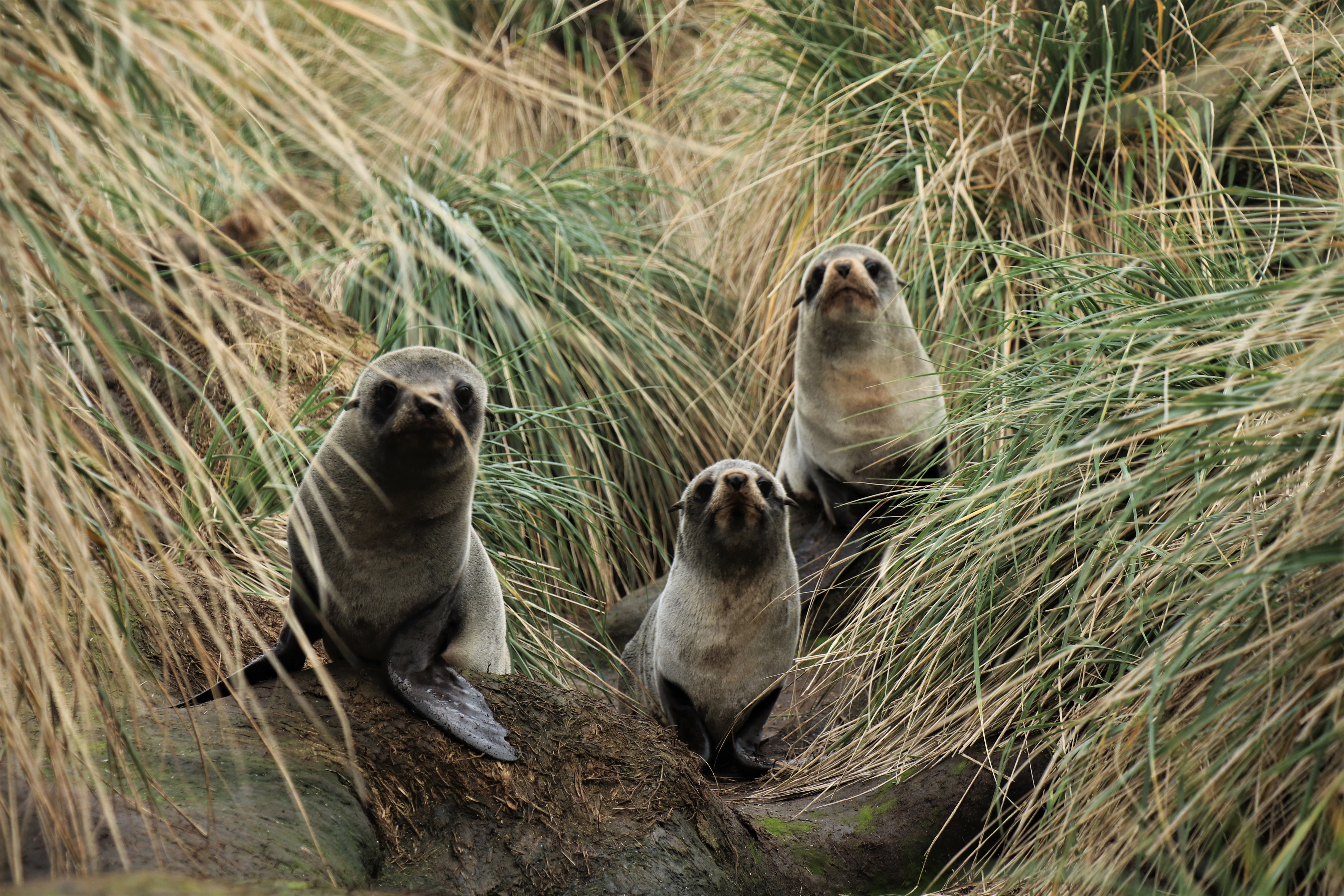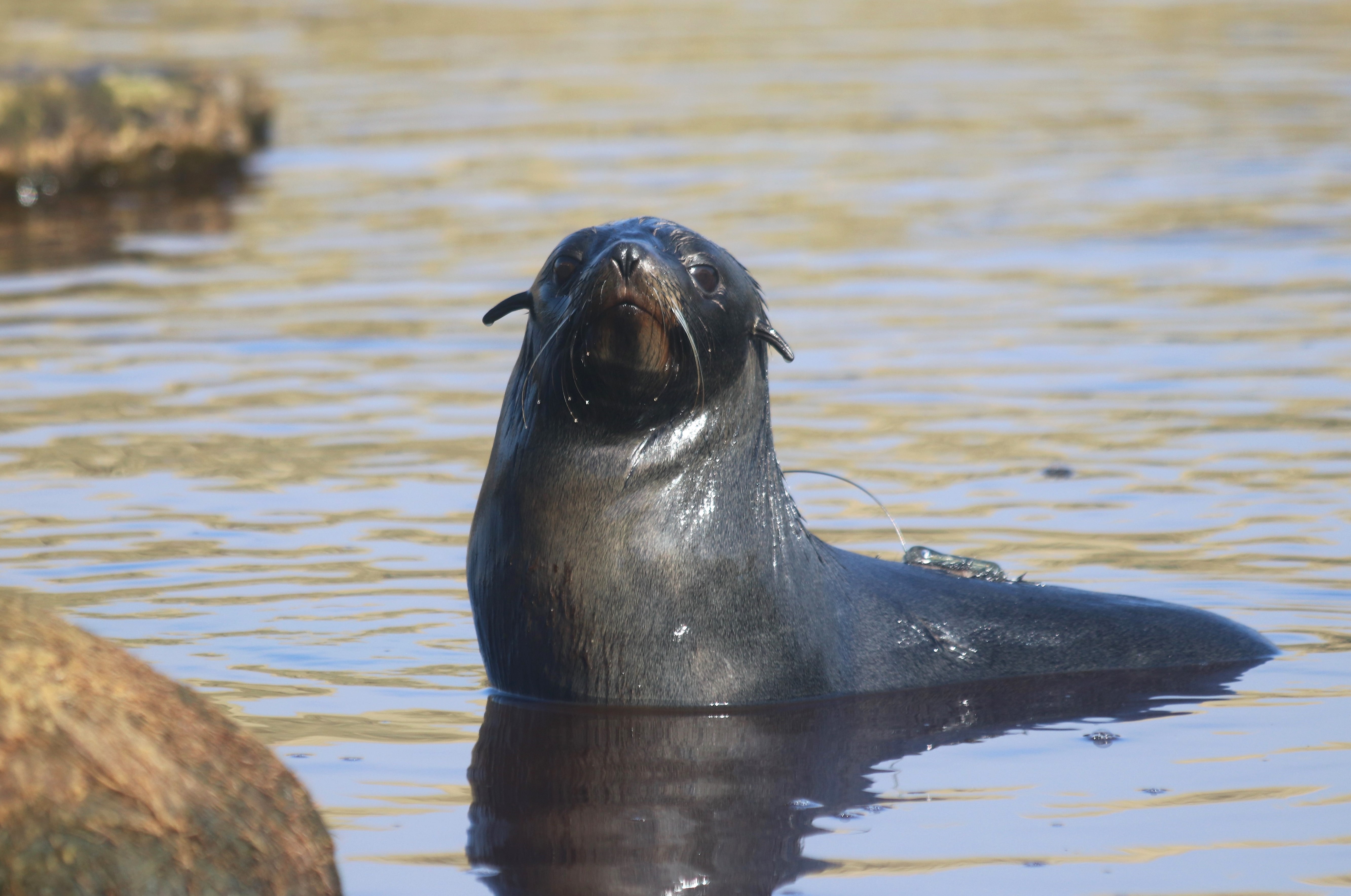Fur seals in the Falklands – Part 3
11 October, 2018
Kayleigh Jones, a seal biologist at British Antarctic Survey, travelled to the Falkland Islands to spend 6 weeks studying South American fur seals. This blog describes how the team studied pups on the island to help unravel the mysteries of life as a young South American fur seal (Part 1 and Part 2 are available here).
The early exploration phase
After about ten months, South American fur seal pups are weaned and must fend for themselves by exploring and discovering potential foraging sites. During this time, the pups are vulnerable to predation and human activities since they are small and relatively inexperienced. Little is known about where the pups venture during this early exploration phase. To learn more about this cryptic life stage, we aimed to deploy satellite tracking devices on male and female pups of eight months of age.

Tracking data will provide important insights into their habitat use during their first few months at sea after weaning. We hope to determine the pups’ foraging ranges and haul out sites, as well as assess any variability in movements between the sexes and individuals. This work is crucial to understand general South American fur seal biology, which could help inform efforts to protect this charismatic and ecologically important species.
Deploying Tags on Pups
At Bird Island the youngsters formed little pup pods and played together in the shallow water lake to gain swimming experience and social skills. Although we could easily observe the pups from a distance, catching them to deploy trackers was a challenge. To avoid disturbance, we hid behind the tussock grass and rocks then we worked together to catch a pup.

The sex of each pup was determined by lifting up its tail, then its length, girth and flippers were measured with a measuring tape. After this, a satellite tag was glued onto the fur of the pups back. These tags send signals to satellites, which can be used to estimate the pup’s location. We hope to receive location estimates for each pup over the next four months (until the tag batteries run out). The tags will fall off the pups when they moult.
After we deployed tags on five male and five female pups, I monitored the pups’ condition and behaviour by observing them at a distance. I observed them playing in the lake, suckling from their mothers and climbing up rocks and hills. It was great to see them behave just the same as other non-tagged pups.
The next stage of this project involves waiting for the tags to send all signals to satellite, then analysing the data by coding and running statistics. This can be a time-consuming process, but it will enable us to gain vital knowledge about South American fur seal pup dispersal and foraging during the early exploration phase.

This pup tracking project was supported by British Antarctic Survey, the National Geographic Early Career Grant, South Atlantic Environmental Research Institute (SAERI), the Natural Environment Research Council (NERC) and Seal Conservation Society.
Reflections
Working with South American fur seals was an unforgettable experience. They really are very beautiful and entertaining animals and I gained valuable practical skills working in the field. I would like to sincerely thank the organisations that supported this research and to the people that made this fieldwork possible: specifically, Dr Alastair Baylis, Dr Rachael Orben, Megan Tierney and Dr Iain Staniland.
